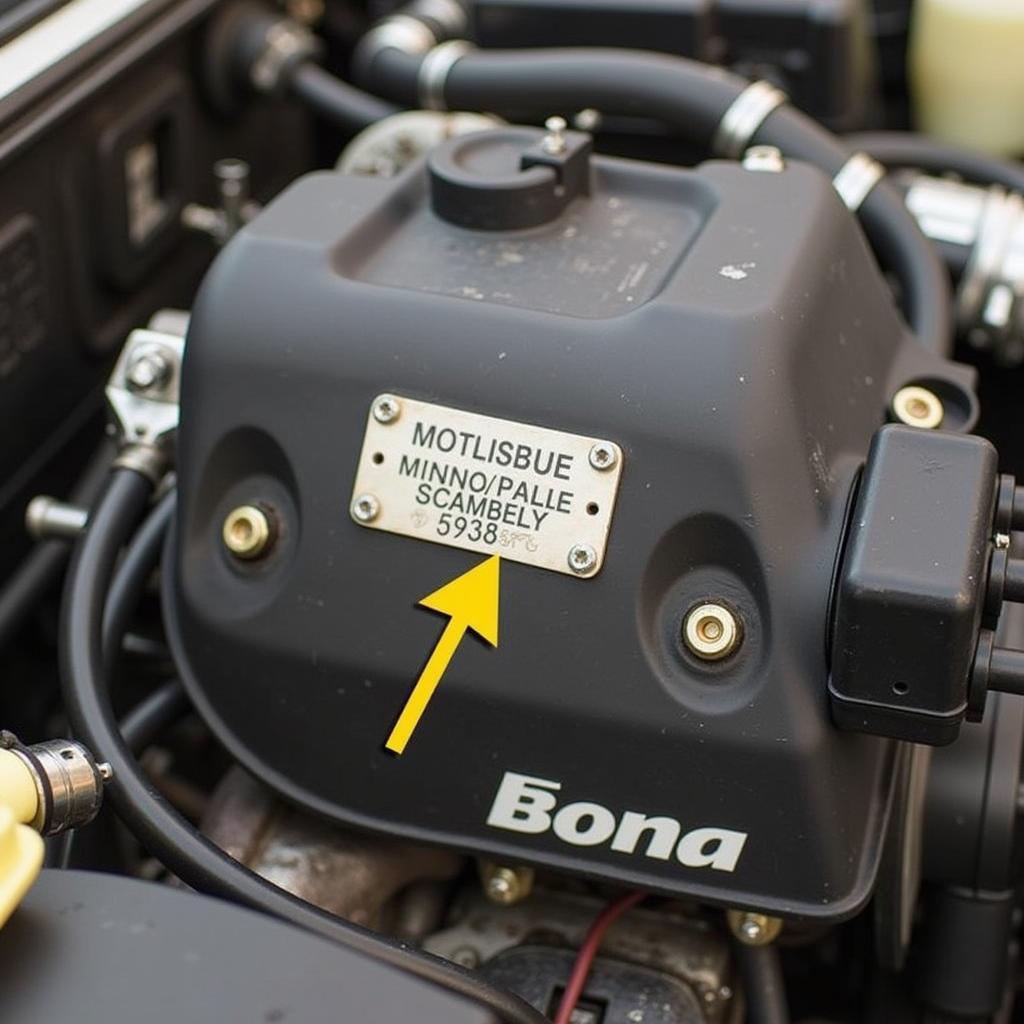Checking car engine details is crucial for both prospective buyers and current owners. Understanding your engine’s specifications can empower you to make informed decisions about maintenance, repairs, and potential upgrades. This article will provide a comprehensive guide on How To Check Car Engine Details effectively, equipping you with the knowledge you need to maintain your vehicle’s performance and longevity.
Are you looking to delve deeper into car detailing costs? Our guide on how much money does it cost to detail a car provides a comprehensive breakdown of expenses involved.
Using the Vehicle Identification Number (VIN)
The VIN is a 17-character code that acts as your car’s fingerprint. It contains a wealth of information, including engine details. You can usually find the VIN on the driver’s side dashboard, near the windshield, or on the driver’s side doorjamb.
Decoding the VIN
The VIN is structured to provide specific details about the vehicle’s manufacturing details, including the engine. While the entire VIN is important, certain characters point directly to the engine type. Understanding this code can reveal valuable information.
Online VIN Decoders
Several online VIN decoders can provide a detailed report about your car, including engine specifications, simply by entering the VIN. These decoders can be incredibly useful for quickly accessing key engine information.
Checking Under the Hood
While the VIN offers comprehensive information, a visual inspection under the hood can also provide valuable engine details.
Locating the Engine Identification Number
The engine identification number, often stamped on a metal plate or sticker, can be found directly on the engine block. This number can be cross-referenced with manufacturer databases for precise specifications.
Identifying Key Components
By visually inspecting the engine, you can identify key components such as the engine type (e.g., inline-4, V6, V8), the presence of a turbocharger or supercharger, and the general condition of the engine.
Want to know what a car detailer covers? Our article on do car detailers clean everything will clarify what services you can expect.
 Engine Identification Number Location
Engine Identification Number Location
Consulting the Owner’s Manual
The owner’s manual is a valuable resource that often provides detailed engine specifications. This includes engine type, displacement, horsepower, torque, and recommended oil type.
Understanding Specifications
Knowing these specifications can help you choose the correct fluids and parts for your engine, ensuring optimal performance and preventing potential damage.
Maintenance Schedules
The owner’s manual also outlines recommended maintenance schedules based on your specific engine type, helping you keep your engine running smoothly.
Using a Diagnostic Tool
Modern vehicles use onboard diagnostic systems (OBD-II) that store a wealth of information about the engine’s performance. An OBD-II scanner can access this data, providing real-time insights into the engine’s operation.
Reading Diagnostic Codes
Diagnostic trouble codes (DTCs) can indicate specific issues with the engine, helping you pinpoint problems and facilitate repairs.
“Understanding your engine’s details allows for proactive maintenance, preventing costly repairs down the line,” says David Miller, Senior Automotive Engineer at Performance Auto Solutions.
Looking for information on checking car details using the car’s number? Check out our guide on how to check car details by its number.
Conclusion
Knowing how to check car engine details is essential for maintaining your vehicle’s health and performance. By utilizing the methods outlined in this article, you can gain valuable insights into your engine’s specifications and condition, empowering you to make informed decisions about maintenance and repairs. Remember to regularly check your car engine details to ensure optimal performance and longevity.
FAQ
- What is the VIN? The Vehicle Identification Number is a unique code that identifies your car and contains information about its engine.
- Where can I find the engine identification number? It’s typically located on the engine block itself, often on a metal plate or sticker.
- What can a diagnostic tool tell me about my engine? It can provide real-time data, diagnostic codes, and other performance information.
- Why is it important to know my car engine details? It’s crucial for proper maintenance, repairs, and making informed decisions about your vehicle.
- What if I can’t find my engine details? Consult a mechanic or contact the vehicle manufacturer.
Curious about tailored car detailing services? Learn about customizing your detail with our article: can you get detail to only do one thing car.
Find out more about accessing your car’s information: how to know my car details.
Need assistance with car engine details or diagnostics? Contact us via WhatsApp: +1(641)206-8880 or Email: [email protected]. Our 24/7 customer support team is ready to help.

Leave a Reply